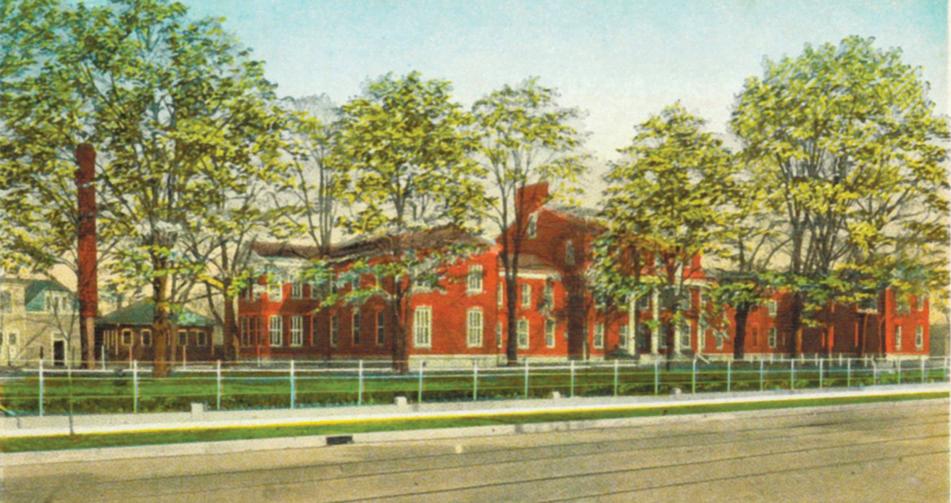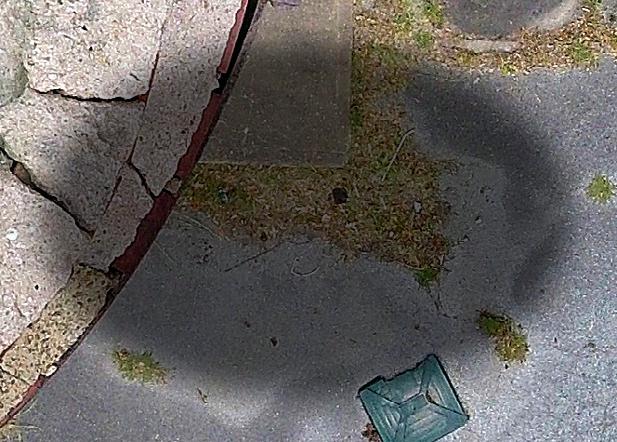
3 minute read
Pivotal ReachingPoint a
Can the Katterjohn building be saved?
by J.T. C RAWFORD
BY THE LATE 1800S, THE UNITED STATES EXPANDED at unprecedented speeds. The railroad system replaced covered wagons, ushering large groups of people across the expanse of our nation at an unheard-of rate.
The new technology was fraught with hazards, however. Rail crashes occurred. Injuries were common. Brakemen, who coupled wagons, often suffered crushing injuries, which ultimately required amputation. In 1890 alone, the railroad industry reported 6,335 deaths and 35,362 injuries.
Outside of war, such mass casualties were uncommon. And such injuries had previously been fairly uncommon, their treatments not being widely studied or formalized. Additionally, injuries often occurred long distances from doctors. Railway surgery emerged as a distinct branch of medical practice, giving rise to major advancements in trauma treatment. Railroad companies employed their own surgeons, and they opened their own hospitals along their lines.
By the late 1880s, Illinois Central Railroad was the major force in moving freight and people between Chicago and New Orleans. They established three major hospitals along their route. Located in Chicago, Paducah, and New Orleans, the hospitals pioneered emergency medical care.
Illinois Central built the Illinois Central Railroad Hospital in Paducah in the late 1800s at 14th and Broadway. That structure burned in 1917, and the railroad rebuilt on the same spot. The new building opened in 1919 and functioned as a hospital until the 1950s. George Katterjohn bought the building, turning it into office space for local businesses. The Katterjohn Building, as it became known, saw its last tenants leave in the early 2000s, when it was shuttered. In 2002, a consortium of owners known as Paducah Historical Properties, LLC purchased the building.
The Illinois Central Railroad Hospital in Chicago was razed in 2011. The hospital building in New Orleans had been torn down in 1970. The building in Paducah represents the last Illinois Central Hospital still standing. Now, years of vacancy have taken their toll, and the future is uncertain. Bobby Miller, a part owner with
The question now stands for Paducah: Can the building be saved? The biggest issue at the moment is discovering a creative use. It can be done. The Coke plant is a shining example. And the old hospital is worthy of consideration. Its significance stretches across time and history. Many passed through its halls when it was a hospital, and many more today remember visiting the Katterjohn Building to do everything from buy insurance to go to the dentist.
Paducah Historical Properties, stated to the Paducah Sun last September that the group wants to see the building preserved, even expressing interest in donating it to anyone who could put it to use.
It suggests an unrealized potential for use and a renaissance of that portion of Broadway. But time is never on a building’s side when it is empty, and its loss would be a major one for the city of Paducah.

Paducah City Government Creates
to Provide Solutions to Permitting Processes
NEW DAY
Is The Title Of A Group
of initiatives developed by an internal taskforce consisting of Paducah City Clerk Lindsay Parish, Fire Chief Steve Kyle, and Business Systems Analyst Emma Shaw. In November 2018, the task force began reviewing the City’s internal permitting processes to determine improvements to become more customer-friendly for citizens and businesses. The three key areas of focus are communication, consistency, and culture. “The experience people have with the city impacts how they feel toward their community as a whole,” said Parish.
One of the main changes is the creation of a new department dedicated to enhancing customer experience. The Customer Experience Department will be led by Parish with the addition of three existing employees who will be operating at the entrance of City Hall. “The new department will have the responsibilities of helping the public obtain a permit, gathering citizen feedback, conducting follow-up calls and meetings, and working to make sure people feel appreciated,” Parish added. The mission of the Customer Experience Department is as follows: to revolutionize Paducah by placing citizens at the center of every decision. Parish outlines the Department’s five values: accessible information, fostering empathy, open communication, supporting journeys, and citizens at the center. “I love your approach with regard to what our government can look like with citizens at the center,” said Mayor Brandi Harless.
“Permitting is inherently complex and is arguably the most challenging aspect of local government for cities across the nation” explains Parish. “It spans multiple departments, multiple fields of expertise, and multiple code sections, and has no centralized champion.”
Some of the initiatives that will be implemented to improve the permitting process in Paducah are as follows:










